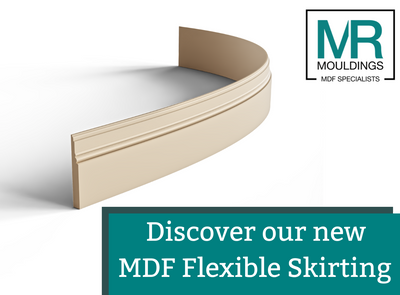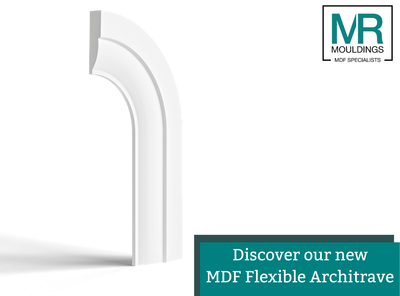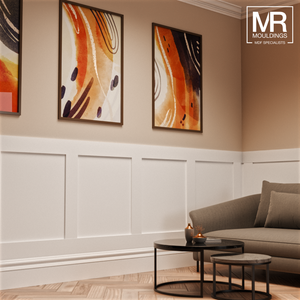
Is Architrave the same as Skirting?
When it comes to interior design, trim is a subtle yet powerful way to elevate the look and feel of a space. Two terms that are often mentioned together are architrave and skirting. While they both serve decorative and practical purposes, many people wonder if they are the same thing. In this article, we will explain the differences between architrave and skirting, explore their roles in interior design, and discuss how they can enhance your home's aesthetic value.
Why Might Someone Want Architrave or Skirting?
Architraves and skirting are not just about aesthetics; they also serve functional purposes. Whether you're building a new home or renovating an existing one, choosing the right trim is crucial in achieving a polished and well-finished look.
Architrave frames doors and windows, offering a clean transition from the wall to the frame. It adds character and elegance to your home, creating a distinctive boundary around your windows and doors. Architrave can also conceal imperfections in the joints, like gaps or shrinkage in the door frame.
Skirting, on the other hand, is typically used along the bottom of the walls, where the wall meets the floor. It protects walls from damage caused by knocks, furniture, or general wear and tear, while also hiding gaps between the wall and floor. Skirting serves the practical purpose of concealing wiring or electrical connections while also providing a clean and tidy look to a room’s base.
Both elements of trim play significant roles in completing a room's interior design, and choosing the right types of architrave and skirting can change the character of your space.
When Were Architrave and Skirting Popularised?
The use of trim elements like architrave and skirting boards has been a staple in architecture for centuries. Historically, architrave has been used in classical architecture as a structural component of columns, but in modern interior design, it serves as an ornamental piece around windows and doors. The trend toward using it in home interiors became more prominent during the 17th and 18th centuries in Europe, as interiors became more refined, and attention to detail was a sign of luxury.
Similarly, skirting boards have been around for ages, though their main function historically was to protect the lower part of walls. In earlier homes, walls could easily be scuffed and damaged by furniture or other movement. Adding skirting was a way to protect the vulnerable lower portions of walls.
While they have both evolved over the years, these elements remain as integral components of modern interior design, largely due to their practical and aesthetic benefits. Today, they come in a wide variety of styles, designs, and materials suited to different décor trends.
So, Are Architrave and Skirting the Same?
While both architrave and skirting are types of trim used in interiors, they are not the same. Let’s explore the distinct differences between them:
An architrave is a type of decorative trim that typically frames doors and windows. Architraves are often thinner than skirting boards, though they can vary in height and thickness. They are available in a wide range of profiles, from simple and minimalistic to more intricate and ornate designs.
Alternatively, unlike architrave, skirting's role is largely protective. Skirting, also known as baseboards, protects walls from everyday damage caused by foot traffic, furniture, or cleaning equipment. This function makes it particularly useful in high-traffic areas, like hallways and kitchens.
Additionally, skirting hides imperfections where the wall and floor meet. The floor and wall joints are often uneven or unsightly, and skirting can provide a clean edge that conceals these discrepancies.
Beyond practicalities, skirting boards also work as a framing device, offering visual balance and enhancing the room’s look. It gives your space a sense of completion, ensuring there are no bare, exposed parts of the wall structure.
While both skirting and architrave add to the overall design, their specific purposes and installation locations differ, making them two distinct elements in a space.
Comparing Architrave and Skirting in Terms of Style and Function
The style of both architrave and skirting can have a huge impact on the overall atmosphere of a room.
Architraves are available in varying profiles and materials, allowing for a classic or modern aesthetic. A deeper, more ornate architrave may work beautifully in a period property or traditional interior, whereas a simpler, cleaner design might be more fitting for modern or minimalist styles. An architectural feature like an architrave can be a statement element around your doors and windows, giving the entire room a sophisticated touch.
On the other hand, skirting boards help with transitioning from the wall to the floor in a visually harmonious manner. The profile of the skirting board impacts a room’s visual scale—taller skirting can make a room look more imposing, while shorter skirting is more subtle. Skirting boards also work to anchor a room, adding contrast to light floors or coordinating with flooring materials to create a seamless environment.
For both, the height and profile contribute greatly to the overall look. Generally, a more intricate design fits well with traditional or period properties, whereas sleek, simple designs can suit modern, contemporary interiors.
The Advantages and Disadvantages of Architrave and Skirting
Advantages of Architrave
-
Aesthetic Enhancement: Architrave serves to elevate the look of doors and windows by adding an elegant border.
-
Concealing Gaps: It can cover imperfections, like small gaps or shrinkage in door frames.
-
Variety of Designs: Available in countless profiles, making it suitable for different styles and eras.
Disadvantages of Architrave
-
Cost: Architrave may add to the overall project cost, especially if you choose high-end, detailed profiles.
-
Potential for Damage: Being closer to the door or window frame, architrave can be more vulnerable to damage or wear.
Advantages of Skirting
-
Wall Protection: Prevents damage and scuffing at the base of walls.
-
Hides Imperfections: Helps cover uneven floor or wall joints.
-
Adds Architectural Interest: Just like architrave, skirting can add a polished and framed effect to a room’s lower boundaries.
Disadvantages of Skirting
-
Requires Regular Cleaning: Due to their location near the floor, skirting boards can accumulate dust and grime, requiring frequent cleaning.
-
Installation: Skirting installation can require more precision, especially in areas with uneven floors or baseboards.
Installing Architrave and Skirting: The Fitting Process
Installing skirting and architrave can both be relatively simple tasks for a DIY enthusiast with the right tools. However, getting clean edges and a professional finish often requires careful measurement and trimming. Here's a brief overview of the installation process for each:
Fitting Architrave
-
Step 1: Measure the dimensions of the door or window frame and cut the architrave to size.
-
Step 2: Use wood glue or nails to attach the architrave to the frame.
-
Step 3: Fill any gaps with caulk, ensuring a smooth finish and sealing off any visible joints.
-
Step 4: Sand the area for an even surface and apply paint or wood varnish for protection.
Fitting Skirting
-
Step 1: Start by measuring and cutting your skirting boards to fit around the room’s perimeter.
-
Step 2: Nail or screw the skirting boards into place.
-
Step 3: Seal the edges with caulk or joint filler to create a seamless look.
-
Step 4: Finish by painting or staining the skirting board to match the room’s color scheme.
Whether you choose to incorporate architrave or skirting into your home, both can contribute immensely to the style and functionality of your space. While architraves enhance the aesthetic of door and window frames, skirting boards provide practical protection and visual finesse at the room's base.
When considering which to add to your interior, think about your room’s overall design theme, the size of your space, and the functionality required. If you have a period home with elegant features, intricate architrave and tall skirting boards could create an air of sophistication. For minimalist modern homes, cleaner, streamlined profiles will help achieve a sharp and contemporary look.
For expert advice and the highest quality products, MR Mouldings offers an extensive range of architrave and skirting boards. Our team is here to help you find the perfect styles for your home, as well as offer installation services to ensure a flawless finish.
Ready to enhance your home with stunning architrave or skirting boards? Contact us today for premium trim and expert installation services.




